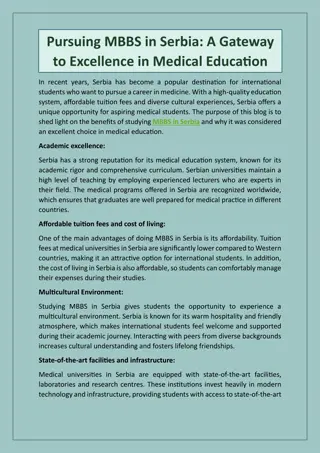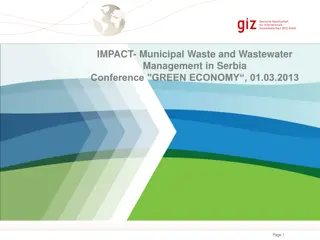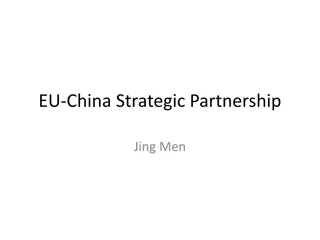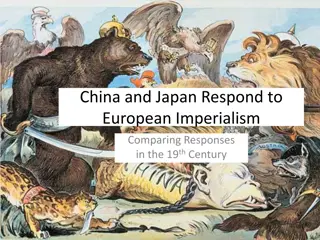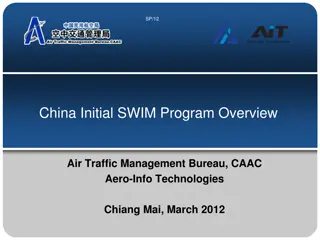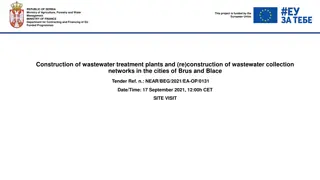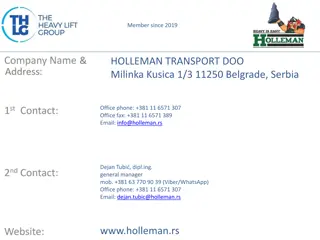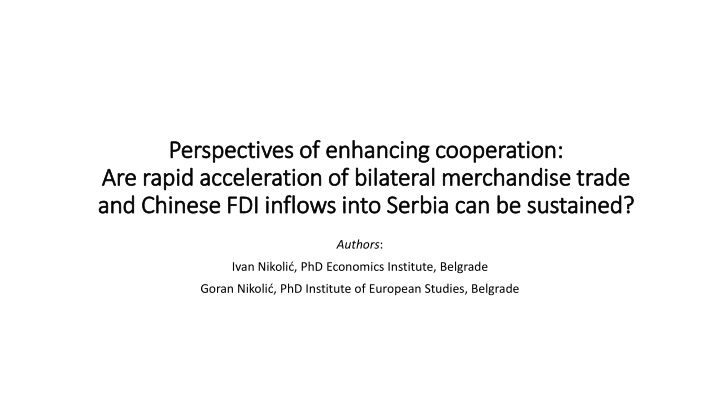
Enhancing Cooperation: Chinese Investments in Serbia Trend Analysis
Explore the sustainability of accelerating bilateral trade and Chinese FDI inflows in Serbia, amidst changing global dynamics. Analyze the impact of China's investments in Serbia and the potential for future collaboration in emerging technologies and green industrial policies.
Download Presentation

Please find below an Image/Link to download the presentation.
The content on the website is provided AS IS for your information and personal use only. It may not be sold, licensed, or shared on other websites without obtaining consent from the author. If you encounter any issues during the download, it is possible that the publisher has removed the file from their server.
You are allowed to download the files provided on this website for personal or commercial use, subject to the condition that they are used lawfully. All files are the property of their respective owners.
The content on the website is provided AS IS for your information and personal use only. It may not be sold, licensed, or shared on other websites without obtaining consent from the author.
E N D
Presentation Transcript
Perspectives of enhancing cooperation: Perspectives of enhancing cooperation: Are rapid acceleration of bilateral merchandise trade rapid acceleration of bilateral merchandise trade and Chinese FDI inflows into Serbia can be sustained and Chinese FDI inflows into Serbia can be sustained? ? Are Authors: Ivan Nikoli , PhD Economics Institute, Belgrade Goran Nikoli , PhD Institute of European Studies, Belgrade
Introduction The 14+1 framework under Belt and Road Initiative in Europe is on a slippery slope. The relationship between Brussels and Beijing is rapidly transformed from competition, through systemic rivalry, to decoupling in many areas. In these circumstances, Serbia, by far the biggest Western Balkans country, is the exception that proves the rule. Even if it finds itself politically between a rock and a hard place, the country has managed to preserve its independence and a balanced relationship between the West and the East. Refused to join EU sanctions against Russia although supports Ukraine, neither. With the EU's irrational unwillingness to expand to the Balkan, China is successfully filling the geopolitical vacuum with a win-win outcome to accelerate economic development through increased connectivity. Apart from loan-based projects, Chinese investment is becoming an increasingly important field of bilateral cooperation. Investment has been directed mainly towards Serbia s export-oriented manufacturing areas, as well as key infrastructural projects.
Research objectives The aim of this analysis is to examine to what extent the exuberance of economic relations with China helped Serbia as a buffer against negative exogenous shocks caused by the COVID-19 pandemic, as well as Russia s full-scale invasion of Ukraine. At the same time, the perspective of this cooperation will be evaluated, especially with regard to the signing of the Memorandum of Understanding, which marked the formal beginning of negotiations on free trade between Serbia and China. Are there any grounds for optimism about cooperation in the production of emerging technologies, a more coordinated and efficient approach to the green industrial policy that awaits us in the future?
China's investments in Serbia China's investments in Serbia in recent years have been growing faster than total Chinese OFDI along BRI countries. In 2015, investments from China in Serbia amounted to a modest 66.5 million euros (or 3.1% of the total FDI inflow), but in 2022, investments reached 1,399.3 million euros (or 31.7% of the total FDI inflow).
Moreover, 98.2% of these investments were located in the mining, processing industry and construction sectors. Source: author's calculation
Chinese investments in the Republic of Serbia, by Branch of Activity Chinese investments in the Republic of Serbia, by Branch of Activity MINING AND QUARRYING 2015 2016 2017 2018 2019 2020 2021 2022 China's share in total net FDI Liabilities 0 0 0 74,5% 57,0% 113,4% 26,9% 241,4% EUR thousands, r.scale 0 0 0 309.433 69.661 241.247 31.974 356.588 MANUFACTURING 2015 2016 2017 2018 2019 2020 2021 2022 China's share in total net FDI Liabilities 0,7% 22,1% 11,5% 27,3% 10,4% 18,9% 21,0% 27,0% EUR thousands, r.scale 4.964 165.334 73.019 254.175 114.994 160.839 313.091 424.838 CONSTRUCTION 2015 2016 2017 2018 2019 2020 2021 2022 China's share in total net FDI Liabilities 22,1% 18,2% 25,2% 24,8% 16,9% 28,2% 30,5% 39,4% EUR thousands, r.scale 58.446 49.658 102.419 116.869 143.613 108.469 263.417 592.089 Source: author's calculation
The overall value of exports of the Republic of Serbia in the period 2017-2022 increased from EUR 15 billion to EUR 27.3 billion, respectively Selected destinations of Serbian exports, period 2017-2022 by regions (countries): Contribution to the value increase of exports Share in the total value of exports EU28 65,2% 66,2% W.Balkan 12,8% 16,2% R.Federation 2,2% 4,7% China 8,8% 2,3% Source: author's calculation In period 2015-2022, the value of trade exchange between Serbia and China increased 4.15 times and Serbia's merchandise exports to China 59.5 times. After Germany, China has become the second most important economic partner for Serbia.
The essential outcome of this process: Serbia vs Germany (EA) - divergence since 2016... Source: Eurostat data; author's calculation
FTA - expectations and risks Serbia and China should sign a Free trade Agreement (FTA) by the end of the year... The food and beverage industry could benefit from the FTA However, the agreement is important because of the wider context... In order to increase the export of Serbian products, an agreement alone is not enough. It is necessary to organize more efficient production on a larger scale, more competitive transportation to such a distant market, and of course, to lead a competitive game with other countries that are interested in Chinese consumption. The negative effect on customs duty revenues! All this is a complicated process that requires a strategic approach... One must be patient, to slowly and carefully weigh the arguments for and against certain measures.
General conclusion The reasons for promoting foreign direct investment from China have been different so far. In this part of Europe, the recipe for Serbia will somehow be a panacea for others. That is why it is a mutual challenge. Therefore, this work can be useful for policymakers of both countries.

